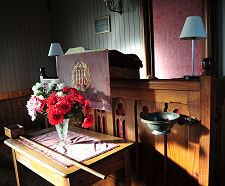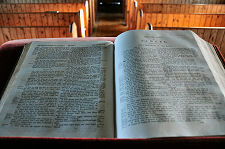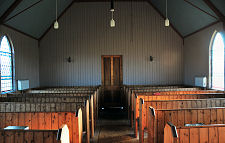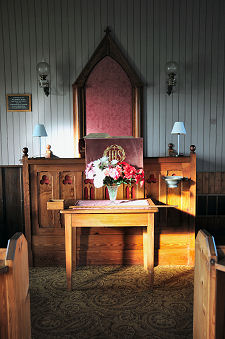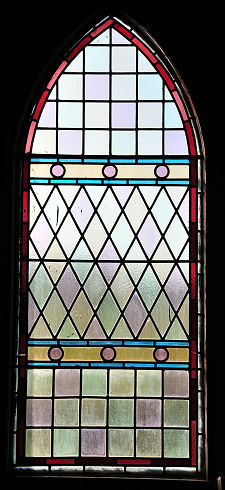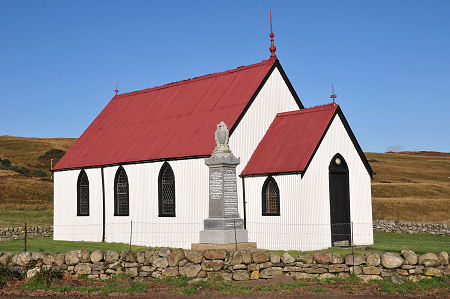 Syre Church |
The tiny scattered settlement of Syre can be found in Strathnaver in Sutherland. From a visitor's point of view, its most striking feature is the beautiful white-walled and red-roofed "tin" church standing beside the road.
"Tin" churches, cottages, halls, barns and other buildings were once a very common sight across the Highlands of Scotland. They were seen, especially during the latter half of the 1800s, as the perfect solution to the growing need for new buildings in areas where access was often still difficult. They were prefabricated in a variety of patterns, with the parts then being transported to and assembled on site. Though often referred to as "tin" they were usually made from corrugated and galvanised iron.
To modern eyes, the idea of a corrugated iron building might not seem attractive. The corrugated iron used for this purpose was considerably thicker than that now usually seen; while the process of galvanisation helped protect the structure from the Scottish climate. There are fewer of them still standing today but the fact that many still remain is a testament to the resilience of the design and the materials used. (Continues below image...)
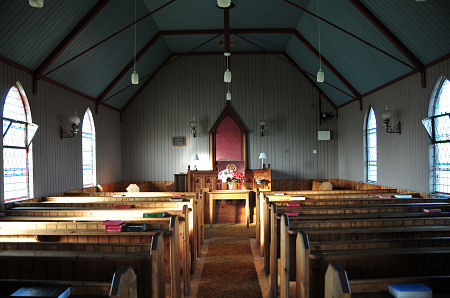 Inside the Church |
Syre Church, sometimes referred to as Strathnaver Parish Church or Strathnaver Mission Church, was built in 1891, apparently from a kit of parts produced by the Glasgow works of the London-based company, Frederick Braby & Co. Ltd. Details of the church appear to match drawings printed in their catalogue at the time.
The church was built to provide a place of worship for the local population of shepherds, gamekeepers and ghillies employed by the Sutherland Estates. There's a certain sense of irony here. There had previously been a church at Achness, two miles south of Syre, but between 1811 and 1821 the Countess of Sutherland and her husband, the Marquess of Stafford (later to become the Duke and Duchess of Sutherland), had 15,000 people cleared from their vast estates, mostly by the estate factor, Patrick Sellar. Strathnaver was especially badly hit and with no population the old church was no longer needed. Seven decades later the replacement population was sufficient to justify a church being built again.
The farm to the west of the church is known as Syre Farm and the farmhouse is often known as Patrick Sellar's House, suggesting that in later life he settled to farm in this part of a landscape he had changed so utterly.
The interior of the church is every bit as lovely as its exterior. There are still oil lamps in place, but it seems that in normal use they have been replaced by electric lighting.
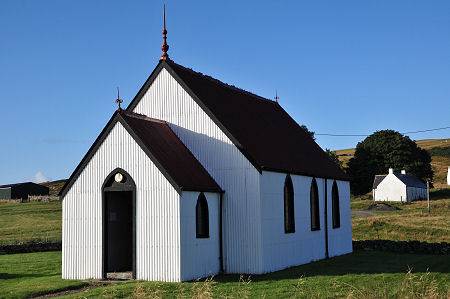 Another View of the Exterior |
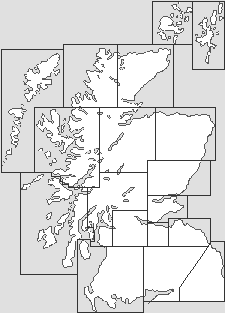
|
|
|
Visitor InformationView Location on MapParish Facebook Page What3Words Location: ///brambles.equity.boat |
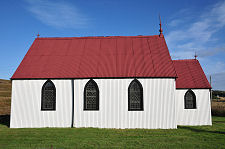 The Church from the South |
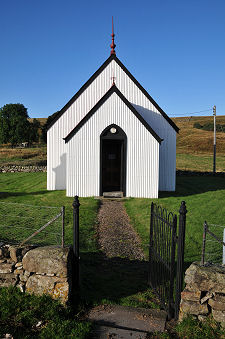 View from the East |
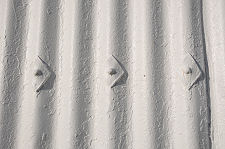 Exterior Surface |
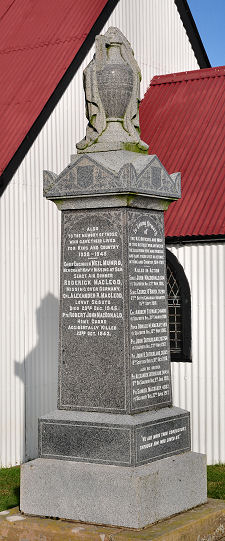 War Memorial |
